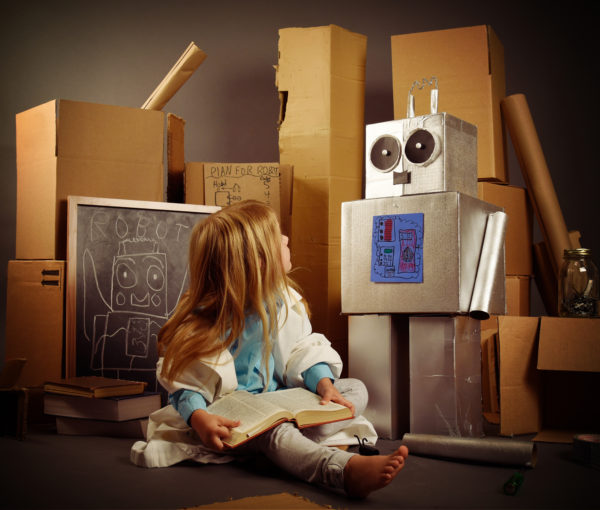“What if schools could offer a different approach to STEM education that provided students with truly immersive learning opportunities?” That question came to Ethan Berman, founder of i2 Learning, after the experience of his nine-year old daughter, who liked school but loved solving problems and making things with her own hands, especially, as she put it, “if it was something useful.”
That was what inspired Berman to found Boston STEM Week, which just concluded its second successful year by replacing the usual curriculum for the more than 6,000 students and 300 teachers across 37 Boston middle schools. During this week, schools replace their usual curriculum with projects aimed at building lunar colonies, creating interactive monsters, designing digital games, and practicing surgical techniques.
STEM as an Entry Point to the Heart and Soul
Since its introduction, educators from across Boston have remarked on the program’s ability to engage and empower students. Reminiscing on her experience from STEM Week 2016, Marjorie Soto, principal of the Hurley K-8 Dual Language School in Boston’s South End, put it this way: “I saw kids who were wearing goggles and lab coats, working with models of the human heart to see how the blood goes through it. They were able to make connections and inferences based on what they saw, and connect it to what they had read. They not only experienced this learning, they owned it. For my sixth, seventh, and eighth graders, STEM Week was like finding the entry point into their heart and soul.”
The inaugural STEM Week program was so successful that five Boston schools have signed onto a month-long pilot program that replaces their traditional sixth grade coursework through Thanksgiving week. Using a special curriculum co-developed with MIT that expands the Building a Lunar Colony learning module, these sixth graders will read and write science fiction, discover space exploration, and develop their own form of government in addition to constructing a sustainable colony.
Why Middle School? And Why Engineering?
i2 focused on middle school students because research showed that this was the age at which boys and girls started to lose interest in science and math. “Our theory was if you change the way these subjects are taught, you can change that perception,” said Berman.
The program’s curriculum is based on the engineering design process; this iterative process teaches that it’s okay to make mistakes as long as one is willing to learn from them.
According to Phil Thornton, school liaison at i2, “There are an awful lot of kids these days who are pretty risk averse. They actually don’t want to start something until they have a pretty good idea that they’re on the right path.” Instead, students in the STEM Week program are encouraged to give something a try and, if it doesn’t work, sit down and think about how it could have been better; then take another shot at it.
Of course, it’s in the classrooms where the true test of this approach to STEM education takes place. Research conducted by The Center for Technology and School Change (CTSC) at Teachers College, Columbia University revealed significant differences in student perceptions pre- and post-STEM Week, including increased interest in STEM-related subjects and classes, increased comfort in working on projects, and increased interest in STEM-related careers.
“It is not an overstatement to say that this type of learning environment has the potential to change the trajectory of young people’s lives,” says Geoffrey Rose, principal at South Boston’s Oliver Hazard Perry School. There was a sense of excitement, an atmosphere of accomplishment. The kids were so excited to show off their learning.”
Principals’ Powerful Stories
At Rose’s school, a student who had been struggling with literacy gained enough coding proficiency over the course of the week that he created a digital game so challenging, no one could get through it. Rose was thrilled for the boy, “Now, he has a success that he can revisit and draw from when faced with other challenges.”
Rose recalled watching one of his 7th graders demonstrate his digital monster to a kindergartener. “The boy had learned enough coding to get the monster to light up, and the younger kid was just full of questions that the older boy was patiently explaining and answering.”
As STEM Week evolves into STEM month, Berman and Thornton are thinking about getting the idea in to as many schools in the city as possible. “We’re thinking about what we call i2 month,” says Berman, “because it’s not just STEM; then maybe a conversation about doing a semester.”
Marjorie Soto is already way ahead of them; she saw how STEM Week changed her students, many of whom are Latino and from low socioeconomic homes. “It stayed with them for the rest of the school year,” she says, “I want this program to start in the fifth grade,” she says, “and I want it to last all year.”
- The evolving requirements of a K-12 school network - April 24, 2024
- A bungled FAFSA rollout threatens students’ college ambitions - April 24, 2024
- How digital tools and AI can enhance social studies - April 23, 2024


